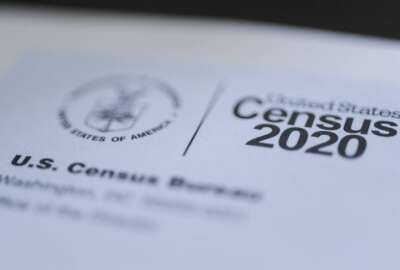Hubbard Radio Washington DC, LLC. All rights reserved. This website is not intended for users located within the European Economic Area.
Congress’ to-do list crowded with budget headaches
Congress returns to work today with a crowded agenda and little time. Lawmakers must come to agreement on 2014 funding before the fiscal year ends Sept. 30 or r...
Congress returns to work today with a crowded agenda and little time.
Right off the bat, lawmakers face three major issues related to the federal budget: Setting annual agency funding for when the new fiscal year kicks in Oct. 1; coming up with an alternative to the automatic spending constraints known as sequestration that are set to take an even bigger bite from federal spending next year; and negotiating a raise in the borrowing limit before the government defaults on its obligations.
Setting aside the budget, there are also other measures affecting federal employees that remain to be worked out, including legislation to overhaul the cash-strapped Postal Service and a potential 1 percent pay raise for civilian federal workers.
Did we mention there are just nine legislative days left before Congress faces the first of these deadlines?
So, at least for the short-term, don’t expect any grand sweeping measures from Congress, experts say.
Budget to-do list by the numbers
4 — number of appropriations bills the House has passed this year
0 — number of appropriations bills the Senate has passed this year
12 — number of appropriations bills Congress needs to pass annually
9 — number of legislative days before the fiscal year ends
$967 billion — amount of spending in FY 2014 authorized by House budget plan
$1.058 trillion — amount of spending in FY 2014 authorized by Senate budget plan
$91 billion — difference in spending between House and Senate plans
“I would like to think that what the Congress is going to do is take this opportunity to resolve — if not once and for all, at least for the next couple of years — what the direction of the federal budget is going to be and try to actually create some predictability for federal agencies, contractors and other people who get money from the federal government,” said Philip Joyce, a professor at the University of Maryland. “There’s nothing in our recent experience which should lead us to believe that that’s actually going to happen, however.”
Sequestration complicating budget process
The first deadline Congress faces is in passing annual appropriations bills. In a normal year (which has become all too rare), lawmakers must agree on 12 annual spending bills establishing agency funding before the new fiscal year starts Oct. 1 — or risk a government shutdown.
“The Congress has done virtually nothing in terms of trying to finance appropriations for fiscal year 2014, so that’s something they’re going to have to deal with one way or another,” Joyce said.
The good news is that there’s already movement on this front. The House is expected to take up a continuing resolution as early as this week, although no details have yet been released.
Jennifer Hing, a spokeswoman for the House Appropriations Committee said the funding bill would likely be at the current, post-sequestration levels.
The appropriations process this year has been snarled by the automatic budget constraints known as sequestration.
The House and the Senate generally disagree about how to account for the cuts. The House settled on a $967 billion plan that encompasses the total amount of the sequester cuts but spares the Defense Department from deeper reductions. The Senate, on the other hand, wants a higher top-line number of $1.058 trillion, which assumes that sequestration will be repealed or replaced with alternative deficit savings.
With no plan yet for bridging that $91 billion gap, nearly all analysts agree lawmakers will punt the issue at least for a few weeks by passing a stopgap continuing resolution.
“Chances are a CR is going to get passed,” said Jessica Klement, legislative director for the National Active and Retired Federal Employees Association (NARFE). “But at what levels? That can cause headaches.”
That’s because sequestration in 2014 will require Congress to keep spending below the current year’s level. If Congress issues a stopgap funding measure that spends above the budgetary caps imposed by law, that would bring about a forced across- the-board reduction to bring spending back below the prescribed levels.
“I think federal agencies and other people that deal with the federal government can expect that if we just have business as usual — which is just an impasse on the budget and maybe a series of continuing resolutions — we’ll see a sequestration for fiscal year 2014, which will look an awful lot like the one for 2013,” Joyce said.
‘Messy’ debt ceiling fight looms
Romina Boccia, a budget analyst at the Heritage Foundation, a conservative think tank, agrees that disagreements over sequestration will lead Congress to adopt a short-term spending measure.
Her best estimate is that Congress set a CR for anywhere from 60 to 90 days.
However, that would have the effect of lumping negotiations over annual agency funding in with the bargaining over raising the government’s borrowing ability — known as the debt limit.
“This is a very risky way of dealing with this issue, because they are very different,” Boccia said. “The debt limit has in the past been used as a leverage point for broader deficit reduction,” she added, in a way that annual appropriations have not.
Treasury Secretary Jack Lew announced last month the federal government would hit the debt ceiling — meaning it would run out of money to pay all of its bills — in mid-October.
There’s little appetite for stopping an increase in the debt limit, outright, which would result in a government default, Joyce said.
But if history is any guide, the negotiations won’t be easy.
“I think that’s going to be messy, because it always is,” Joyce said.
The last fight over the government’s borrowing authority in the summer of 2011 helped usher in the current budget morass, creating the Budget Control Act and opening the door to the budget-cutting “meat ax” of sequestration.
Klement, whose group represents federal employees and retirees, said she fears federal employee pay and benefits could wind up as bargaining chips this time around.
For NARFE, the most threatening proposal on the table is a change in how retirees’ cost-of-living adjustments are calculated.
The “chained Consumer Price Index” formula assumes that as prices of household goods and services increase, people opt for lower-cost items — which would reduce annual COLA increases by 0.3 percentage points a year. Opponents of the plan argue the reduced COLAs would pile up over the years eventually resulting in dramatic reductions for long-time retirees.
Both President Barack Obama and House Speaker John Boehner (R-Ohio) have signaled interest in adopting the chained CPI. Obama even went so far as to include it in his 2014 budget proposal.
“At this point in time, it’s really easy pickings,” Klement said.
NARFE is planning a week-long series of events next week to draw attention to the chained CPI, she said.
Pay raise still up in the air
Besides the federal budget, many federal employees are also concerned about their household budgets — and how they’ll meet them if the pay freeze continues into a fourth year.
Late last month, Obama announced his support for a 1 percent federal pay raise, reiterating a plan he first put forward in his 2014 budget proposal earlier this year. Federal employees have had their pay frozen since January 2011.
But Congress will likely have the final say in whether feds actually see the pay bump.
Rep. Gerry Connolly (D-Va.), whose Northern Virginia district includes many federal employees, told Federal News Radio in a recent interview he believes lawmakers may still try to block the measure.
“This is a very, very modest attempt at trying to break the pay freeze,” Connolly said. “I applaud the president for that, because there’s symbolism in that and an important policy issue that needs to be addressed. But I’m frankly not hopeful that the Republicans are going to budge on this.”
Last year, for instance, Obama proposed an even smaller raise — 0.5 percent. However, a deal on government funding, supported by both Republicans and Democrats, blocked the pay increase from ever going into effect.
Committees continue oversight work
A handful of key committees are also set to oversight work of federal agencies and federal employees this week.
The House Oversight and Government Reform subcommittee on the federal workforce, chaired by Blake Farenthold (R-Texas), kicks things off Tuesday with a look at the Census Bureau’s preparation for the 2020 census.
Later in the week, the full committee plans to call current and former Obama administration officials to the table to examine potential violations of federal transparency laws. The Associated Press reported in June that top administration officials were using secret government email accounts to conduct official business.
The Senate Homeland Security and Governmental Affairs Committee subcommittee on federal programs and the federal workforce, chaired by Sen. Jon Tester (D-Mont.) is also planning to investigate government transparency efforts.
“Senator Tester plans to use his subcommittee this fall to examine the federal government’s tendency to over-classify not only programs but jobs as well, and how such classifications can lead to less accountability and transparency,” a Tester spokeswoman said in an email.
Postal reform still a moving target
Comprehensive postal reform legislation is another item on the legislative agenda left hanging from before lawmakers’ August recess.
Massive losses have been piling up at the U.S. Postal Service over the last year and a half, and agency leaders have repeatedly called on Congress to pass legislation reforming its financial structure.
Shortly before legislators decamped last month, the House Oversight Committee approved the Republican-supported Postal Reform Act of 2013 strictly along party lines. The measure now awaits action in the full House.
The leaders of the Senate Homeland Security and Governmental Affairs Committee introduced bipartisan draft legislation last month.
Congress found itself in almost the same position last year at this time regarding postal reform legislation. But efforts at compromise between the parties — and the two chambers — ultimately stalled.
Sen. Tom Carper (D-Del.), chairman of the Senate committee, said the experience was helpful in laying the groundwork for a future compromise.
“We got the ball in the red zone,” Carper told Federal News Radio in a recent interview. “In football, that means we got the ball inside the 20-yard line. … We didn’t get the ball in the end zone. If we’d done that, we would’ve got a compromise and it would have been enacted. But we had pretty good experience in negotiating with them.”
But Connolly is less optimistic.
“Trying to find common ground remains about as sticky a proposition as it was, frankly, in the previous Congress — which is why, at the end of the day, (Oversight Committee Chairman Darrell) Issa (R-Calif.) could not bring his bill up to the floor,” Connolly said.
Carper said his committee plans to hold two hearings this month on postal reform and said he’s hopeful the committee would be able to mark up a bill and report it out in the first half of October.
RELATED STORIES:
Connolly: Budget uncertainty has ‘insidious impact’ on feds, contractors
Sequestration snarling 2014 budget process
Agencies’ FY 2015 budget planning ‘tied up in knots’ by uncertainty
Obama ends federal pay freeze; Congress could still block
Copyright © 2024 Federal News Network. All rights reserved. This website is not intended for users located within the European Economic Area.




